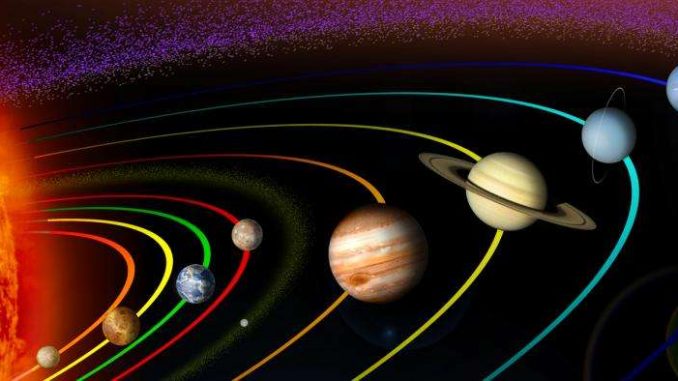
Scientists have discovered a tiny mysterious planet in a strange orbit beyond Neptune on the outer edge of the solar system.
Nicknamed Niku, it appears to be a trans-Neptunian object and it has got scientists baffled.

BYPASS THE CENSORS
Sign up to get unfiltered news delivered straight to your inbox.
You can unsubscribe any time. By subscribing you agree to our Terms of Use
Latest Video
RT reports:
Niku, named after Chinese word for ‘Rebel’, has a diameter of just 200km (120 miles), is 160,000-times smaller than Neptune and behaves like no other similarly-sized planet in the Solar System.
This trans-Neptunian object orbits the Sun in a retrograde direction, meaning it rotates in the opposite direction to the Sun’s rotation. The angle it takes for this unusual orbit is at 110 degrees to the flat plane of the Solar System, on which other planets move around the Sun.
I hope everyone has buckled their seatbelts because the outer solar system just got a lot weirder.
— Michele Bannister (@astrokiwi) August 8, 2016
And that means it’s currently above the plane and rising higher but will eventually cross over, dropping below the plane as it continues its orbit. The fact that its orbit is retrograde was likely caused by a collision with an unknown mass or a gravitational pull by a mystery force.
“Angular momentum forces everything to have that one spin direction all the same way,” said Michele Bannister, an astronomer from Queen’s University, Belfast in Northern Ireland. “It’s the same thing with a spinning top, every particle is spinning the same direction.”
*Something* is keeping the orbits aligned, when precession should slide them. #planetnine doesn’t fix it. Neither did adding a dwarf planet.
— Michele Bannister (@astrokiwi) August 8, 2016
Matthew Holman of Harvard-Smithsonian Centre for Astrophysics was among the team of scientists who discovered Niku and admits this phenomenon throws up many questions.
He said: “It suggests there’s more going on in the outer Solar System than we’re fully aware of.”
I, for one, welcome our new Niku Overlords https://t.co/rpiCd7Cx2m
— Michael Apter (@Michael_Apter) August 11, 2016
It’s quite possible Niku is part of a group of highly-inclined objects all moving in a strange orbital pattern around the Solar System.
The discovery of another group of strangely-related objects in the Kuiper belt led to the claim earlier this year by Caltech scientists Konstantin Batygin and Michael E. Brown that there was a massive ninth planet in the far reaches of our Solar System.
The appropriately-named Planet Nine is said to be 10-times as big as Earth and orbits the Sun once every 10,000 to 20,000 years.
“Whenever you have some feature that you can’t explain in the outer solar system, it’s immensely exciting because it’s in some sense foreshadowing a new development,” Batygin told New Scientist.


